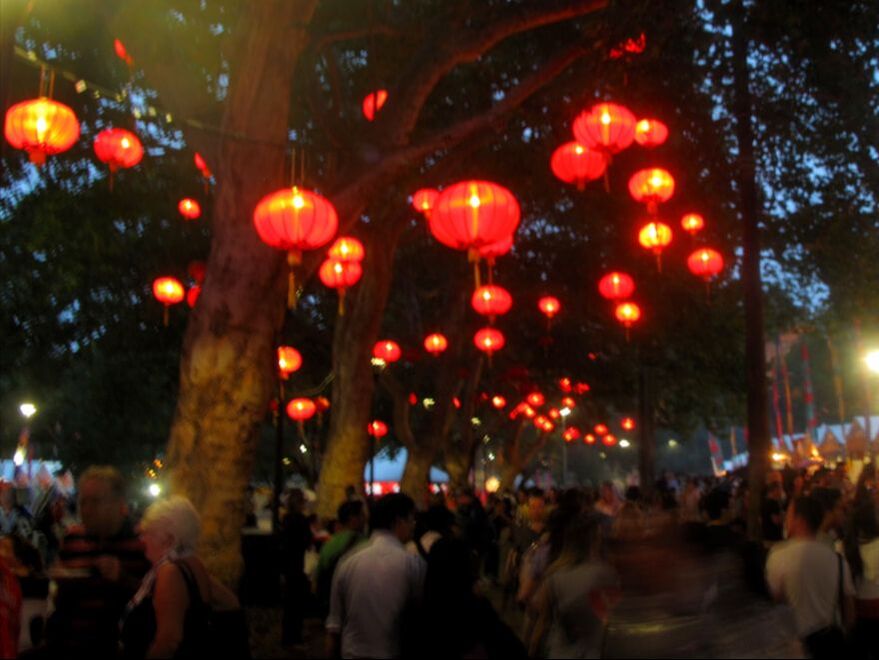|
|
|
Haymarket/Chinatown is a precinct located in the southern end of Sydney’s Central Business District. The precinct has become part of the City of Villages initiative, promoted by the City of Sydney administration to inject dynamism in the local economy based on the belief that the city is made up of diverse marketable areas, each endowed with a unique identity. Unlike the other precincts in the Inner Sydney area, the point of differentiation chosen for Haymarket/Chinatown is ‘ethnicity’ — more precisely, an ambiguous multi-Asianness within which images of Chinese communitarian identity occasionally emerge to confer a sense of authenticity to the ethnic place brand.
In my Identities article, ‘Ethnic community in the time of urban branding’, I observe how these simplified images of ‘groupist’ (Brubaker 2002) Chinese identity emerge from the brand management strategy for the Haymarket/Chinatown precinct despite the diversity of the local business and resident community. I frame these instances as tensions inherent in the process of place branding, which is characterised by the need to essentialise for marketing purposes while grappling with increasing levels of cultural complexity of the most populous Australian city.
In order to highlight the redundancy of these simplified understandings of ethnic identity, data retrieved via longitudinal ethnographic observation of public events and participation in many activities in the precinct are used to analyse the ‘community’ as a provisional construct. The display of ‘authentic’ Chinese culture in Haymarket/Chinatown by a local Chinese community organisation becomes the focus of my Identities article, with its performative strategies of affiliation and identification nested under the main categories of convergence and alignment.
The first term refers to the backstage operations that contribute to the packaging of a wide range of elements related to Chinese culture into a consistent set of performances, symbols and activities proposed to the outsiders’ scrutiny. I look, for instance, at the organisation of a series of events and workshops characterised by an essentialised Chineseness and at the interchangeable strategic uses of Mandarin, Cantonese and English, depending on the various contexts in which the ‘community’ needs to be presented despite the cultural heterogeneity of its membership. The second helps to show that this type of consensual ethnicity is also premised upon the ways in which the ‘community’ is made to work in conjunction with the operations of external stakeholders, whose interests intersect with the application of the place brand for the precinct. The collaborations between the community organisation and a local shopping centre become exemplary in this context: the latter provides the internal workings of the former a stage onto which perform authentic communitarian Chineseness during moments of intensified branding. This analysis aims to destabilise the idea of ‘ethnic community’ as a given, and it taps into the anti-essentialist critique of ‘community’ as an organising principle of collective forms of identification; the aim here is to show the plasticity of this term, echoing Baumann’s idea that the discourse about ethnic minorities as communities ‘is conceptually simple, enjoys a communicative monopoly, offers enormous flexibility of application, encompasses great ideological plasticity, and is serviceable for established institutional purposes’ (Baumann 1996: 30). Place branding operates in this context as an analytical filter to show that the ‘community’ is not a group of individuals defined by a shared, unchanging ‘ethnic culture’, but a malleable construction held together as a process of composition, and an active agent that partakes in a sophisticated process of value production based on the engineered association of culture and place. References: Baumann, G. 1996. Contesting culture: discourses of identity in multi-ethnic London. Cambridge: Cambridge University Press. Brubaker, R. 2002. Ethnicity without groups. European Journal of Sociology 43: 163–189. Blog post by Andrea Del Bono, Western Sydney University, Australia
Read the full article: Del Bono, Andrea. Ethnic community in the time of urban branding. Identities: Global Studies in Culture and Power. DOI: 10.1080/1070289X.2019.1629191
0 Comments
Your comment will be posted after it is approved.
Leave a Reply. |
|
Explore Identities at tandfonline.com/GIDE |
|
The views and opinions expressed on The Identities Blog are solely those of the original blog post authors, and not of the journal, Taylor & Francis Group or the University of Glasgow.

